What It’s Like to Be the Isabella Stewart Gardner Museum’s Horticulturist
“I’m usually a behind-the-camera-type person,” Grace Coburn says.
Barely tall enough to reach the top of the chrysanthemums she’s rotating, Coburn is the horticulturist at the Isabella Stewart Gardner Museum, in charge of making sure the stunning foliage in the old wing’s famed courtyard garden is even more impressive in person than it is on Instagram.
“I never had a drive to do something that didn’t involve working outside,” she says, “or at least working with plant material.”
Coburn’s father ran a landscaping business as she was growing up on Cape Cod, so from a young age she was exposed to all different types of gardens, from natural coastal plains to Nantucket houses brimming with hydrangeas. She honed her “plant nerd skills” at UMass Amherst, in the plant and soil sciences department, before entering the concrete jungle of Boston, and idyllic garden of the Gardner.
Day to day, her routine involves an early start—around 6:30 a.m.—and hours of watering, pruning, and rotating plants.
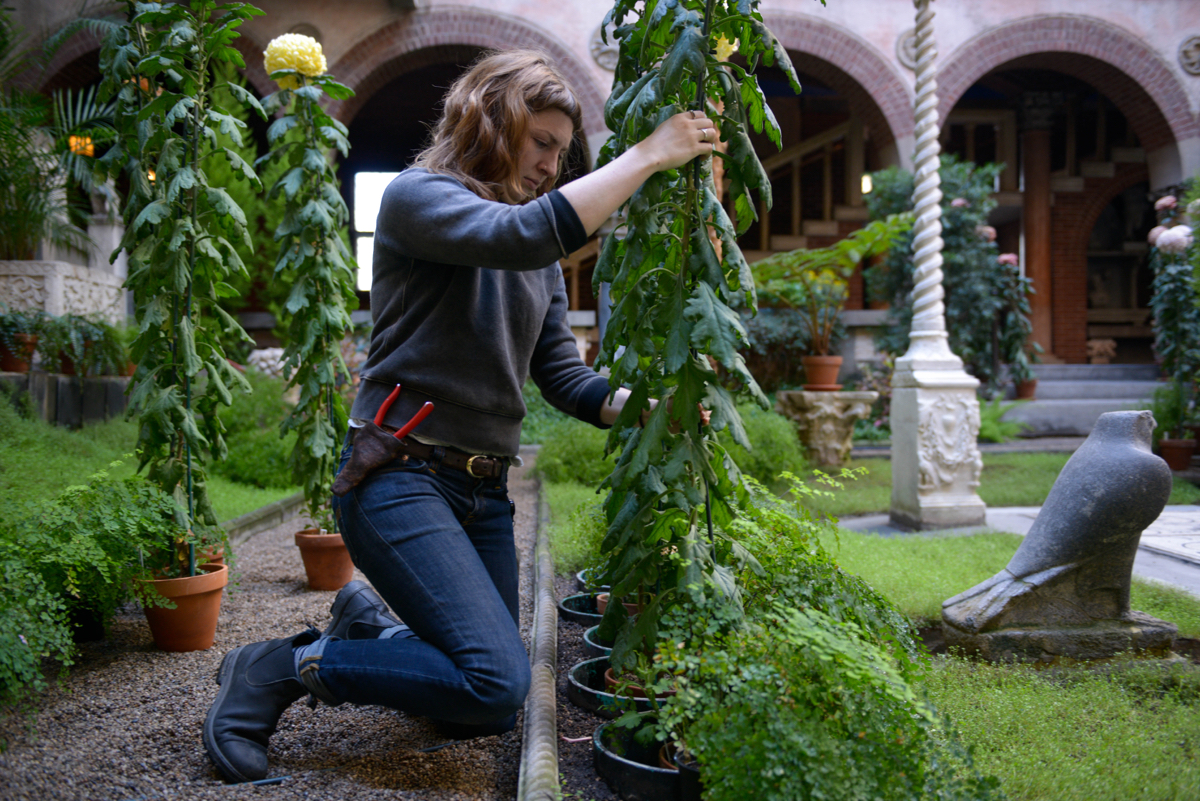
Coburn’s days begin early to get the garden in shape for the museum’s visitors. Her office is bathed in tranquil, beautiful, natural light. / Photo by Lloyd Mallison
“I think a lot of it seems very monotonous, but there’s so much to the work, and there are so many nuanced things” she points out. “Even if I’m watering every day, I’m paying attention to all these different changes that the plants are going through, the effects of the weather… It’s a crazy learning experience through the veil of it just being a monotonous job.”
While she can’t estimate exactly how many plants she’s responsible for at the museum—a question she gets a lot—Coburn does note that all the plants are grown offsite at the museum’s 10,000-square-foot greenhouse in Hingham, Massachusetts, where the greenery can get more sunlight, unencumbered by the Fenway’s surrounding trees and buildings.
This includes the famous hanging nasturtiums that grace the courtyard walls each April. The almost-20-foot-long plants are grown for around eight months, chained up along the walls of the Hingham greenhouse. They’re carefully laid spaghetti-style in one of the museum’s box trucks, Coburn says, before making the journey to the Fenway.
“Instead of bringing them through the loading dock, we bring them through the original entrance, the North Entrance,” she says. “It usually takes about three or four people, depending on the length of them.” The nasturtiums are carried up the building’s steps to the third floor, where they’re delicately draped down the walls.
“There’s a certain amount of athleticism that comes with this job,” she says. “You’ve got to have a little bit of upper body strength.”
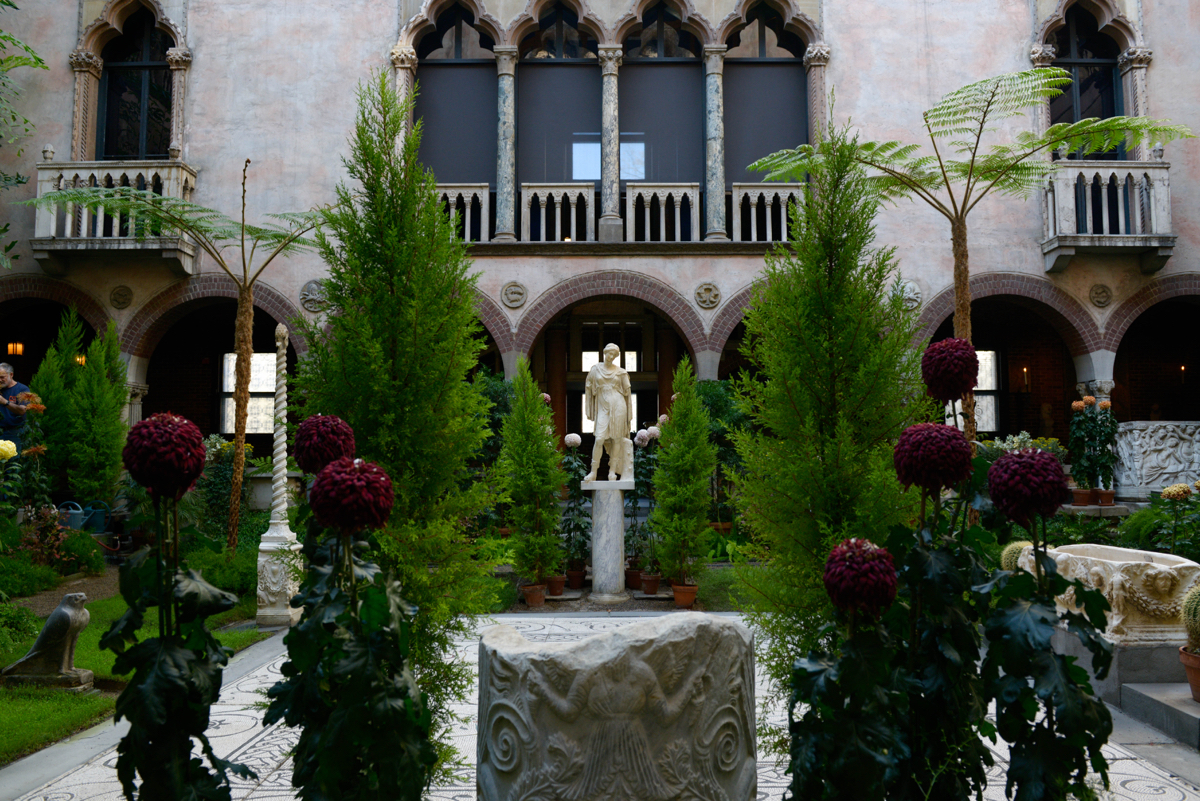
The courtyard and its foliage is a lush jungle of carefully curated ancient artwork and complementary floral installations that are equally as impressive. / Photo by Lloyd Mallison
Some plants are more high maintenance than others. Many will last only a few days in the dry air of the courtyard before needing to be rotated out, and the tall tree ferns that anchor the four corners of the garden, which have been in the courtyard for more than 35 years, need a lot of attention.
“I water them twice daily, sometimes four times in the summer, in the warmer months. They really like to be wet,” Coburn says. “If they get dry, they can drop their fronds overnight, and it’s happened before. Not to me!”
Despite the water requirements, ferns still hold a special place in Coburn’s horticultural heart. Gardening in an environment with as many finicky and detailed work as the courtyard, Coburn knows where she stands with ferns. “Ferns are always there to help me out,” she says.
The museum is known nationally for its stunning floral displays, but the role of the greenhouse supervisor is far from stressful, according to Coburn.
“Being in the courtyard in the morning is incredibly relaxing. … I sometimes have to listen to music just so I don’t get too tired, forget what I’m doing, and become too tranquil.”
Work doesn’t follow her home unless she wants it to, and Coburn is limited in what she can grow at home by living in Boston, where she doesn’t have a large garden.
“I sort of experiment more at home with what I can. I don’t have a lot of light for indoor plants,” she explains. “But I make it work. I have a lot of ferns.
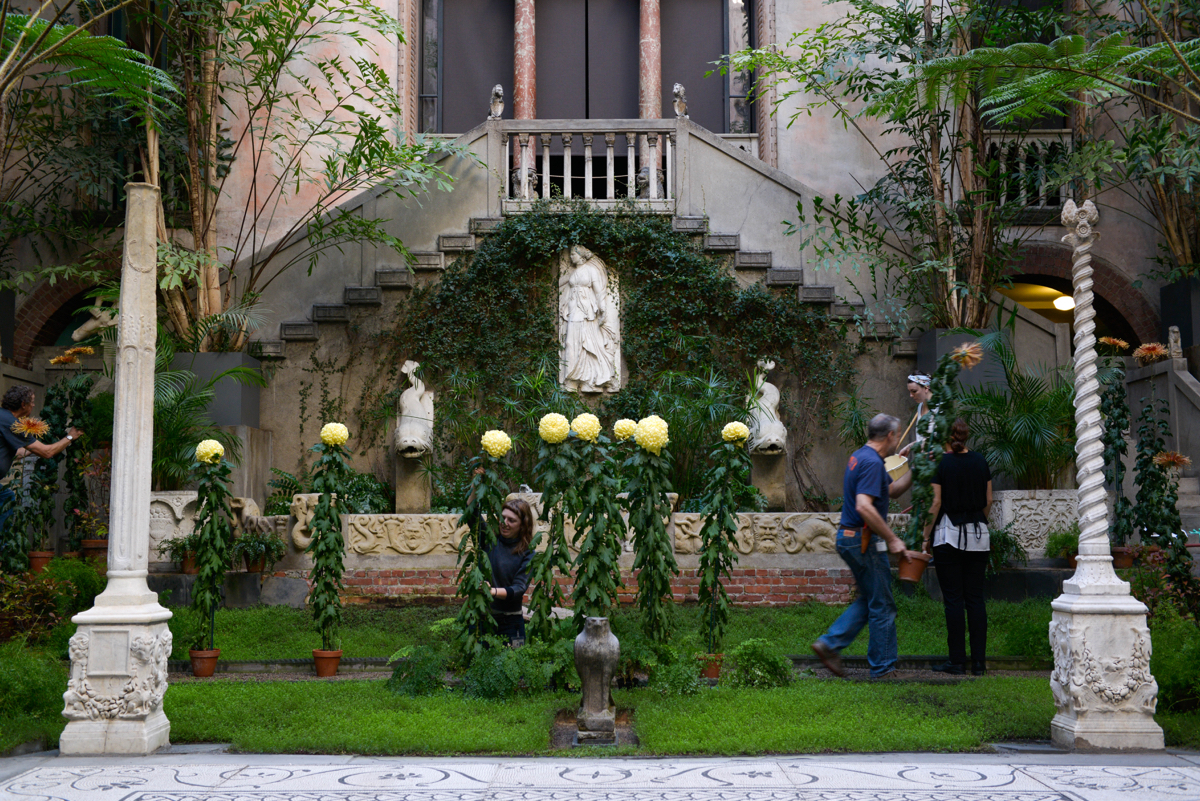
Photo by Lloyd Mallison
Coburn leads a team of volunteers, but is the only full-time employee at the Gardner to tend to the museum’s plants.
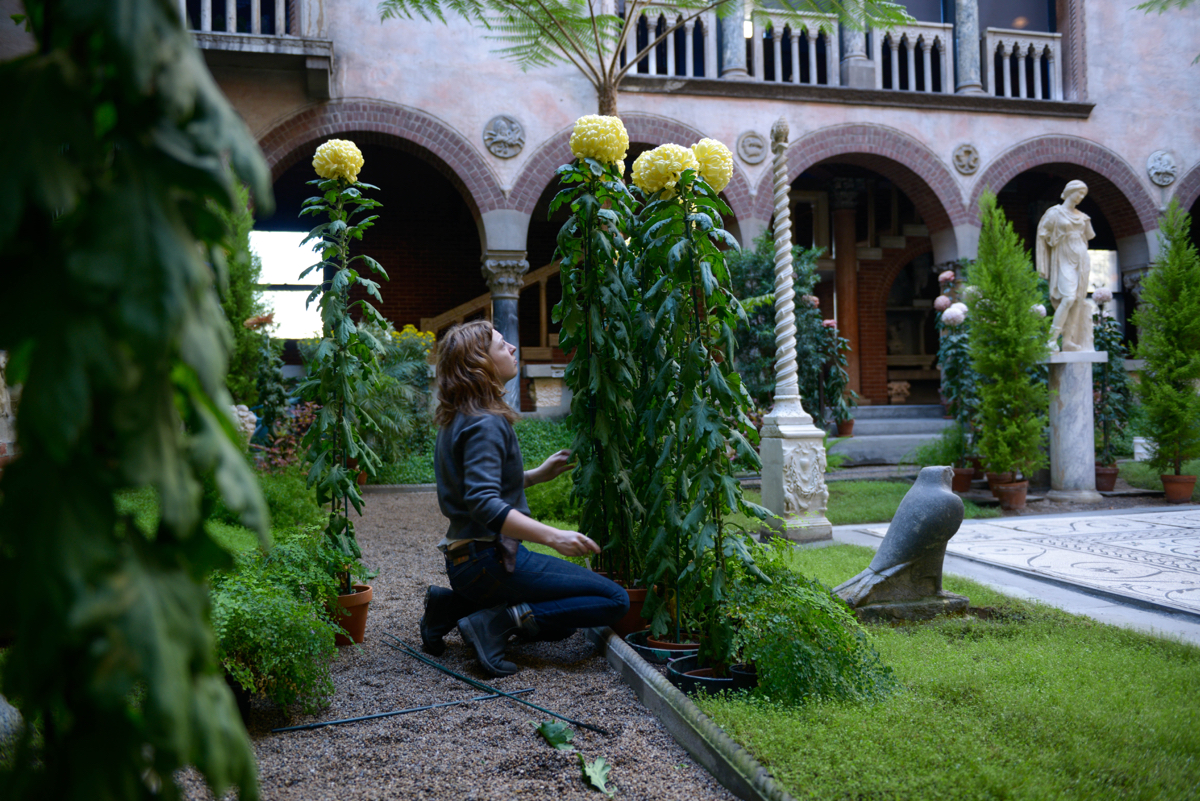
Photo by Lloyd Mallison
She may need a little ingenuity to reach some of the taller plants, but Coburn certainly doesn’t let that stop her.

Photo by Lloyd Mallison
“If you’re a huge plant nerd like I am, the ability to access all these different plants, and certain plants that have been in the collection for decades, is incredible,” says Coburn.
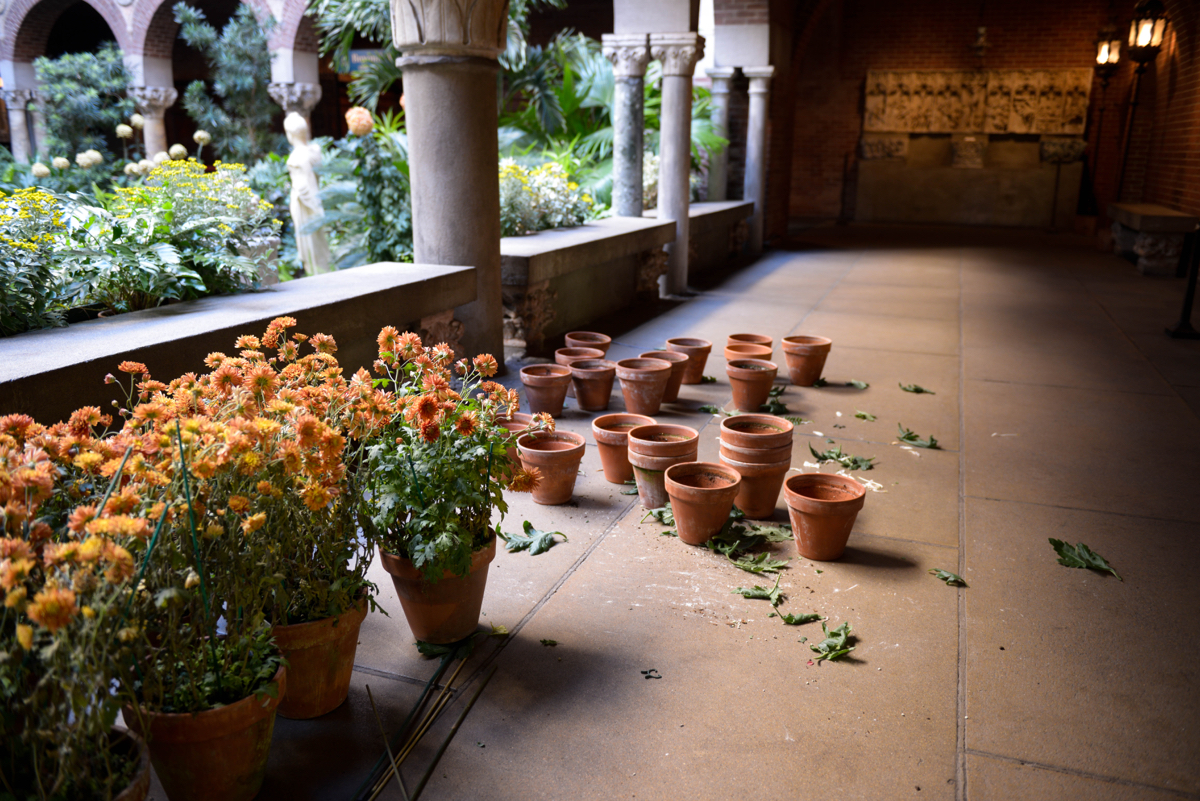
Photo by Lloyd Mallison
Though beautiful, the garden is actually a death sentence for most plants. The lack of UV light and the dry air which preserves the old paintings doesn’t make for a hospitable environment for life. Most of the plants have to be rotated out of the garden for frequent respites.
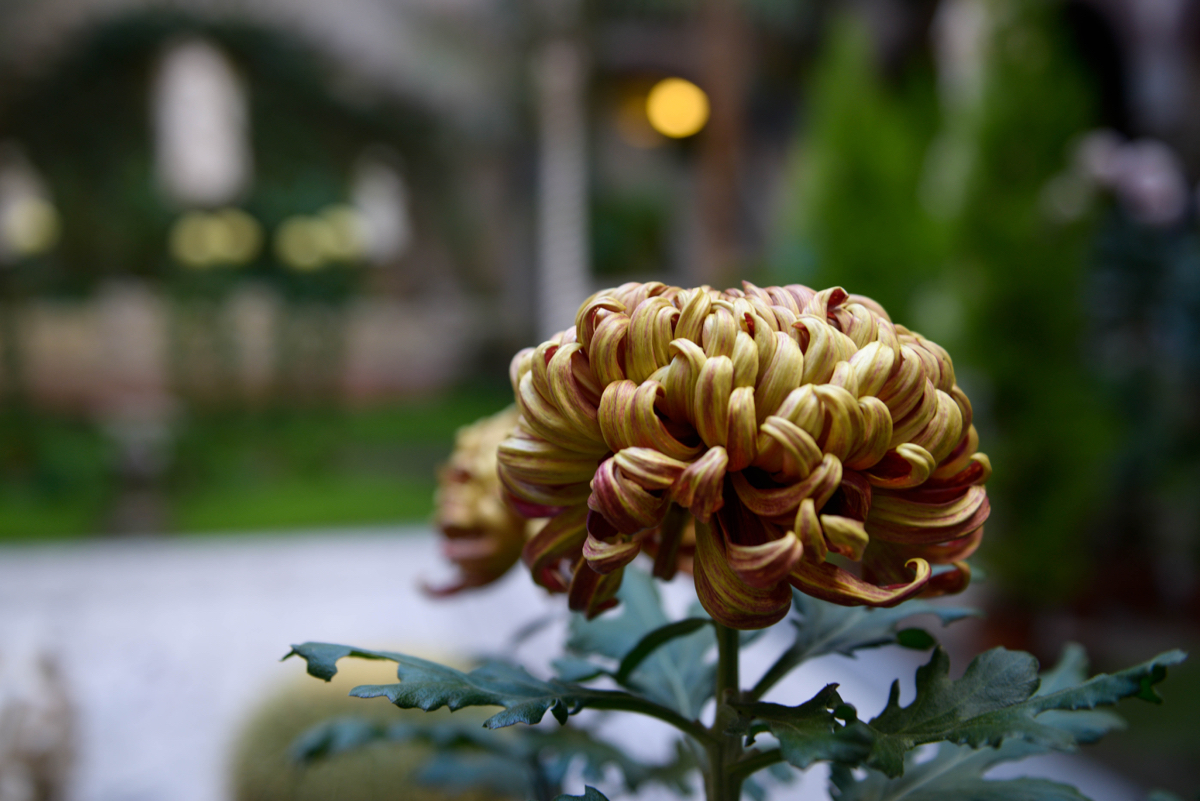
Photo by Lloyd Mallison
In early November, the chrysanthemums—affectionately known as “the ’mums”—were the centerpieces of the display. They grow in a variety of vivid colors.
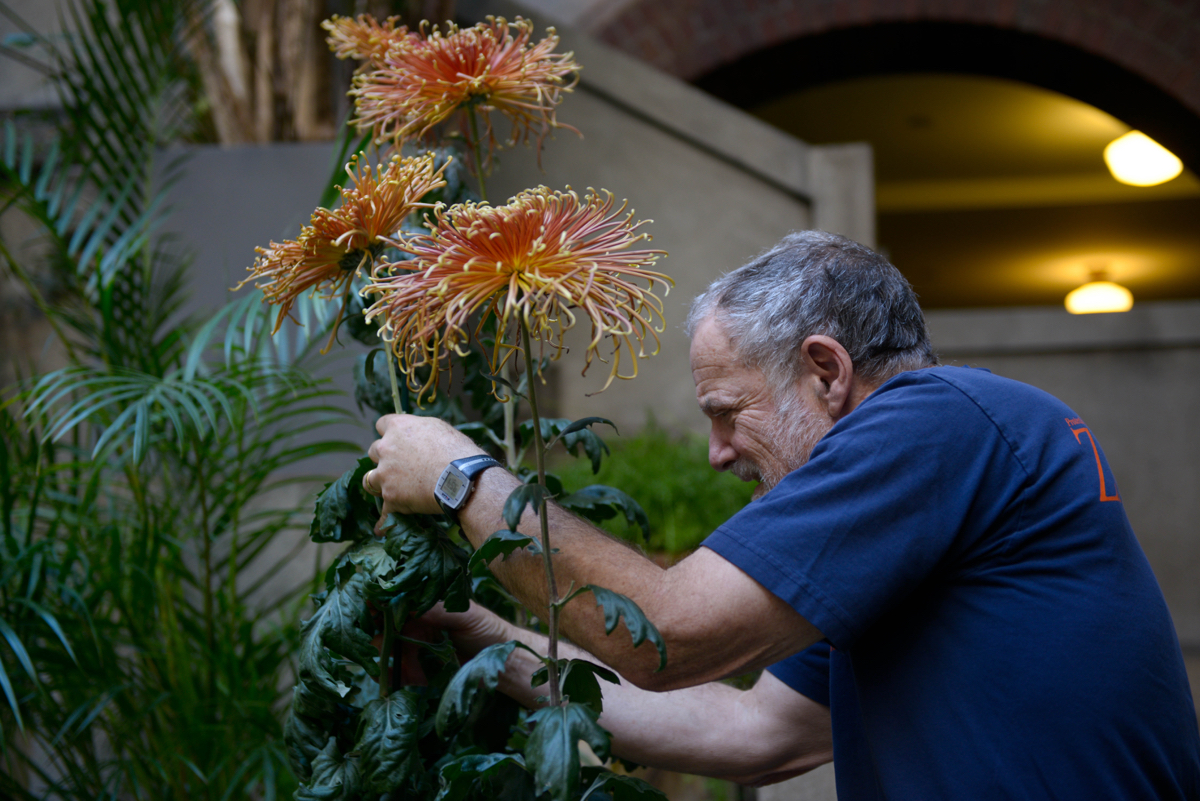
Photo by Lloyd Mallison
It’s a team effort to get the garden looking as naturally beautiful as it does. Volunteer Jim Wieder grapples with a single stem chrysanthemum that won’t lean the right way.
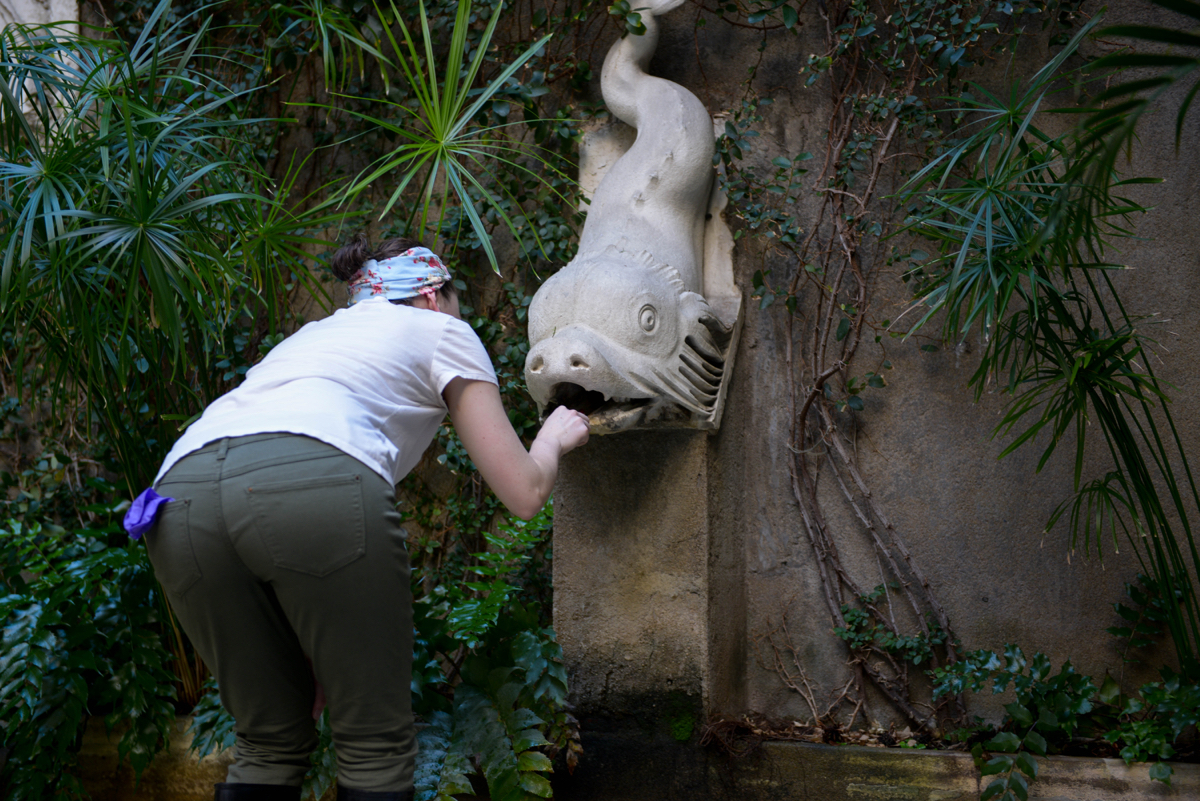
Photo by Lloyd Mallison
Everything needs to look its best, which is why the fountain’s stone fish gets its teeth brushed. Here, volunteer Leanna Schafer cleans the fountain while others work on plants.
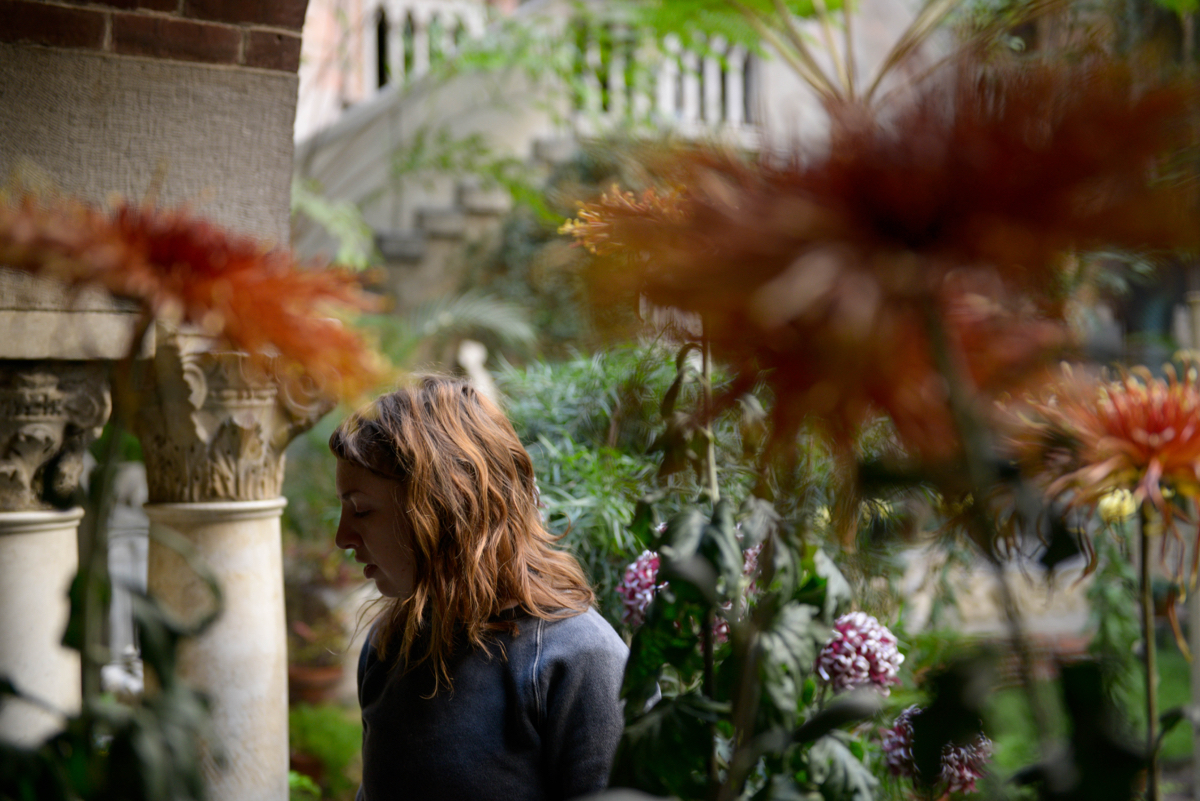
Photo by Lloyd Mallison
Coburn in the courtyard.


